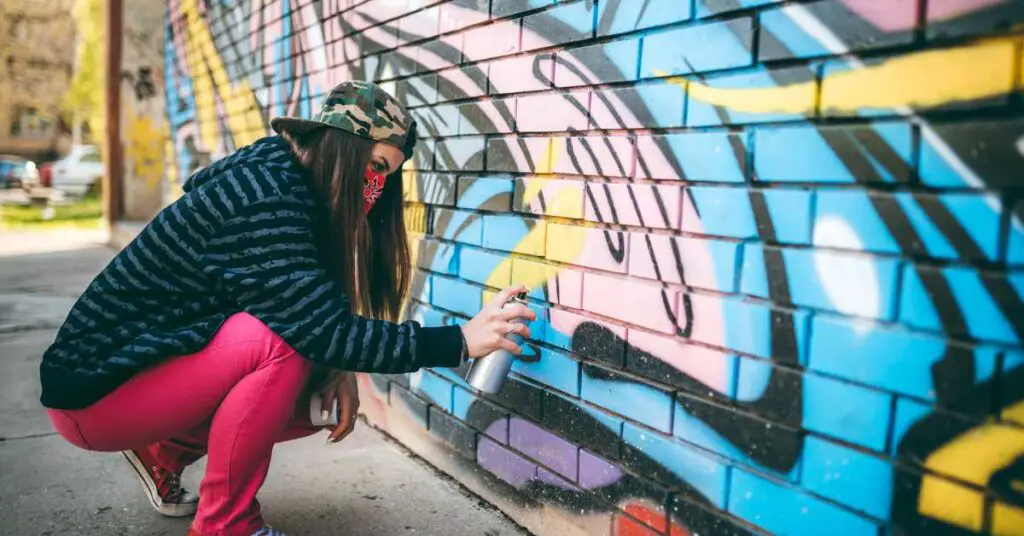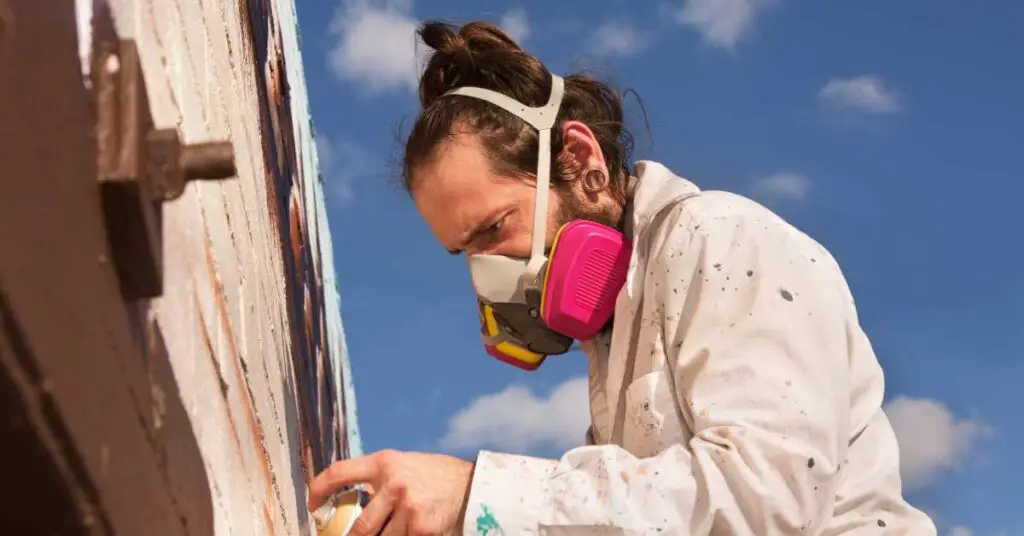What happens if you spray paint without a mask? Inhaling paint particles and fumes can lead to short-term health effects like eye, nose, and throat irritation, headaches, and respiratory issues. Long-term exposure without proper protection increases the risk of chronic respiratory problems, neurological damage, and cancer. To minimize these risks and protect your health, always wear a suitable respirator mask with appropriate filters while spray painting, work in a well-ventilated area, and follow safety guidelines.
As an avid DIY enthusiast, I’ve always been fascinated by the transformative power of spray paint. It’s like waving a magic wand over a dull surface, giving it a fresh, vibrant new life! But, as with all things magical, there’s a catch.
What happens if you spray paint without a mask? I embarked on a quest to find out the truth behind this seemingly harmless oversight, and I’m here to share my discoveries with you.
Brace yourselves, my fellow DIYers, as we dive into the hidden dangers lurking behind every can of spray paint when you leave your mask behind!
What Happens If You Spray Paint Without a Mask?
If you choose to spray paint without wearing a protective mask or respirator then you will most likely inhale some paint particles and vapor that could cause you some problems especially if you are someone who paints all the time.

The Invisible Danger: Paint Particles and Vapors
Spray paint is released from the can as a fine mist of paint particles and solvents, which are responsible for the paint’s quick-drying properties. When you’re painting, you may not realize just how many of these tiny particles and vapors you’re breathing in. Not wearing a mask means inhaling these hazardous substances, which can have both short-term and long-term health effects.
Short-term Health Effects
Without a mask, you’re likely to experience the following short-term health effects after spray painting:
- Irritation of the eyes, nose, and throat: The airborne paint particles and solvents can cause immediate discomfort and irritation, including redness, itchiness, and a burning sensation.
- Headaches and dizziness: Exposure to paint fumes can lead to headaches, dizziness, and lightheadedness, often attributed to the volatile organic compounds (VOCs) found in paint solvents.
- Respiratory issues: Breathing in paint particles and solvents can cause coughing, wheezing, and shortness of breath, especially in individuals with pre-existing respiratory conditions such as asthma or allergies.
Long-term Health Effects
Consistently spray painting without a mask can result in more serious health consequences over time, including:
- Chronic respiratory problems: Repeated exposure to paint particles and solvents can lead to chronic bronchitis, asthma, and other respiratory conditions.
- Neurological damage: Long-term exposure to VOCs has been linked to neurological issues, including memory problems, cognitive impairment, and even permanent brain damage.
- Cancer: Some ingredients in spray paint, like benzene and formaldehyde, are known carcinogens. Prolonged exposure to these substances without the proper protection may increase the risk of developing cancer.
It is very important for your health to wear a protective mask when you are spray painting.
Choosing the Right Mask for Spray Painting
To protect yourself from the risks associated with spray paint, it’s essential to wear a proper mask. Look for masks specifically designed for painting, which typically include the following features:
- Particulate filters: These filters trap paint particles, preventing them from entering your lungs. Masks with replaceable filters are ideal, as you can change the filters once they become clogged with paint.
- Activated carbon filters: These filters help to remove VOCs and solvents from the air you breathe, protecting you from the harmful effects of inhaling paint fumes.
- Comfort and fit: Choose a mask that fits snugly around your nose and mouth, without gaps that could allow paint particles and vapors to enter. A comfortable mask will make it easier to wear for extended periods.
Remember, when it comes to spray painting, safety should always be your top priority. Wearing a mask may seem like a minor inconvenience, but the potential health risks of not wearing one are far more significant. Protect yourself and those around you by always wearing a mask when spray painting, and enjoy the creative process without compromising your well-being.
Best Masks for Spray Painting
FAQs
Here are some common questions about spray painting:
Can you use spray paint without a mask?
Using spray paint without a mask is possible, but it’s not recommended due to the potential health risks associated with inhaling paint particles and fumes.
How to choose a respirator mask?
Choose a respirator mask that fits comfortably, offers adequate filtration for your specific application, and complies with relevant safety standards.
What if I don’t wear a mask and inhale spray paint?
Inhaling spray paint without a mask can cause short-term health effects like irritation, headaches, and respiratory issues, as well as long-term problems like chronic respiratory conditions, neurological damage, and cancer.

How can I protect my lungs from spray paint?
To protect your lungs from spray paint, wear a suitable respirator mask with appropriate filters, work in a well-ventilated area, and follow safety guidelines and best practices.
Is spray painting without a mask dangerous?
Yes, spray painting without a mask is dangerous due to the risks associated with inhaling paint particles and fumes, which can lead to a range of health problems.
What are the side effects of inhaling spray paint?
Side effects of inhaling spray paint include eye, nose, and throat irritation, headaches, dizziness, respiratory issues, chronic respiratory problems, neurological damage, and an increased risk of cancer.
Why should we wear a mask while working with spray paint?
We should wear a mask while working with spray paint to protect ourselves from harmful paint particles and fumes that can cause both short-term and long-term health problems.
Do all respirator masks work equally well?
Not all respirator masks work equally well; their effectiveness depends on factors like fit, filtration capacity, and compatibility with specific filters and cartridges for the task at hand.
Effects of painting without a mask
Painting without a mask can lead to short-term health issues like irritation and respiratory problems, as well as long-term consequences such as chronic respiratory conditions, neurological damage, and cancer.
Is it safe to spray paint outside without a mask?
While spray painting outside can reduce the concentration of paint particles and fumes, it’s still recommended to wear a mask for proper protection against potential health risks.
Can I use an N95 mask for spray painting?
An N95 mask can filter out paint particles, but it doesn’t offer protection against paint fumes and solvents. A specialized respirator mask with appropriate filters and cartridges is recommended for spray painting.
Final Thoughts 💭
So, there you have it, fellow DIY enthusiasts! Our creative adventures with spray paint come with a few hidden perils when we disregard the importance of wearing a mask. But fear not, for knowledge is power!
Now that we’re aware of the short-term and long-term health risks, we can take the necessary precautions to protect ourselves and continue our journey as artistic alchemists.
So, remember to mask up, breathe easy, and let the magical transformations continue – all while keeping our health and well-being in check. Happy spray painting!





